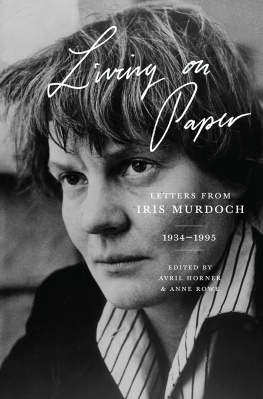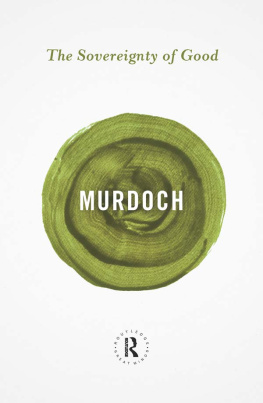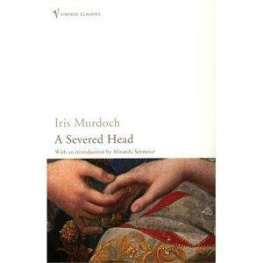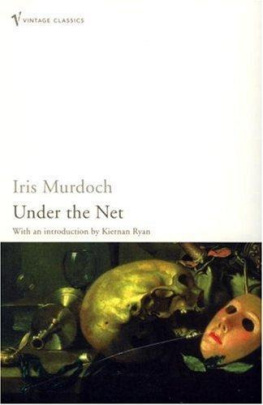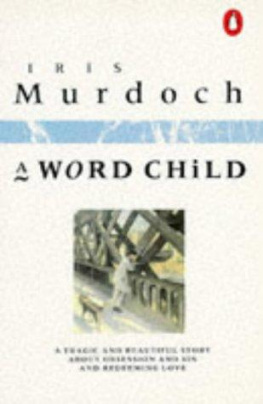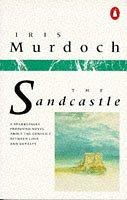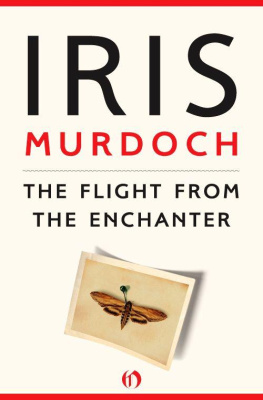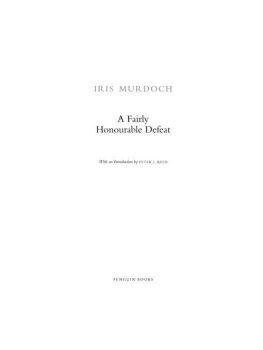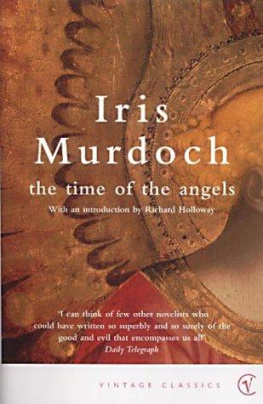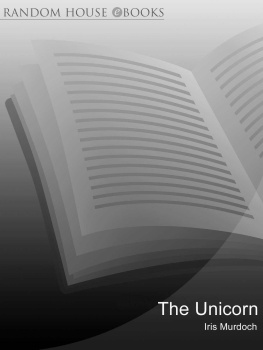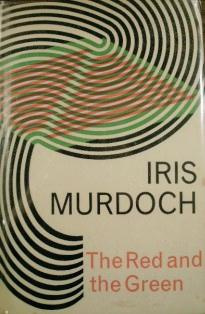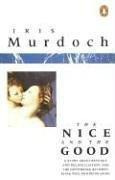Murdoch Iris - Living on Paper: Letters from Iris Murdoch 1934-1995
Here you can read online Murdoch Iris - Living on Paper: Letters from Iris Murdoch 1934-1995 full text of the book (entire story) in english for free. Download pdf and epub, get meaning, cover and reviews about this ebook. year: 2015, publisher: Princeton University Press, genre: Art. Description of the work, (preface) as well as reviews are available. Best literature library LitArk.com created for fans of good reading and offers a wide selection of genres:
Romance novel
Science fiction
Adventure
Detective
Science
History
Home and family
Prose
Art
Politics
Computer
Non-fiction
Religion
Business
Children
Humor
Choose a favorite category and find really read worthwhile books. Enjoy immersion in the world of imagination, feel the emotions of the characters or learn something new for yourself, make an fascinating discovery.
- Book:Living on Paper: Letters from Iris Murdoch 1934-1995
- Author:
- Publisher:Princeton University Press
- Genre:
- Year:2015
- Rating:3 / 5
- Favourites:Add to favourites
- Your mark:
- 60
- 1
- 2
- 3
- 4
- 5
Living on Paper: Letters from Iris Murdoch 1934-1995: summary, description and annotation
We offer to read an annotation, description, summary or preface (depends on what the author of the book "Living on Paper: Letters from Iris Murdoch 1934-1995" wrote himself). If you haven't found the necessary information about the book — write in the comments, we will try to find it.
Living on Paper: Letters from Iris Murdoch 1934-1995 — read online for free the complete book (whole text) full work
Below is the text of the book, divided by pages. System saving the place of the last page read, allows you to conveniently read the book "Living on Paper: Letters from Iris Murdoch 1934-1995" online for free, without having to search again every time where you left off. Put a bookmark, and you can go to the page where you finished reading at any time.
Font size:
Interval:
Bookmark:

LIVING ON PAPER
LIVING ON PAPER
LETTERS FROM IRIS MURDOCH 19341995

IRIS MURDOCH
Edited by Avril Horner and Anne Rowe
Princeton University Press
PRINCETON AND OXFORD
Published in North America in 2016 by
Princeton University Press,
41 William Street, Princeton, NJ 08540
press.princeton.edu
First published in 2015 by Chatto & Windus, an imprint of Vintage.
Vintage is part of the Penguin Random House group of companies.
Letters: Kingston University 2015
Introduction, all footnotes and endmatter Avril Horner and Anne Rowe, 2015
The moral right of Iris Murdoch to be identified as the author of this work, and Avril Horner and Anne Rowe as its editors, has been asserted.
Ed Victor Ltd are the agents for the Iris Murdoch Estate and handle publication rights to all other works. They can be contacted at .
United Agents are the agents for film, television and dramatic rights. They can be contacted at .
ISBN: 978-0-691-17056-5
Library of Congress Control Number: 2015952098
British Library Cataloging-in-Publication Data is available.
Typeset by Palimpsest Book Production Ltd, Falkirk, Stirlingshire
Printed in the United States of America
Printed on acid-free paper.
1 3 5 7 9 10 8 6 4 2
For our grandchildren: Rhiannon, Ffion, Owain,
Iestyn, Eirian and Huw Rowe
and
Samuel, Felix, Lulu, Elise and Dexter Horner
Yet words are so damned important now that were living on paper again. I shall want words from you and words and words! Write all that you think, sweetheart, including the doubts and terrors. Write all that you think and feel.
Iris Murdoch to David Hicks, 5 January 1946
I can live in letters.
Iris Murdoch to Philippa Foot, June 1968
CONTENTS
LIST OF ILLUSTRATIONS
First Plate Section
.
.
.
.
.
.
.
.
.
.
.
.
.
.
.
.
.
.
Second Plate Section
.
.
.
.
.
.
.
.
.
.
.
.
.
.
.
.
.
.
.
.
.
.
Every effort has been made to trace and contact all copyright holders. If there are any inadvertent omissions or errors we will be pleased to correct them at the earliest opportunity.
INTRODUCTION
Iris Murdoch had two studies in her final home, a house in Charlbury Road, Oxford; one was tucked quietly away upstairs at the back, the other was downstairs at the front and was lighter and more accessible. In the small, cluttered upstairs study, Murdoch worked from early in the morning on her philosophical writings and her novels, surrounded by more than a thousand books of philosophy, theology, fiction, poetry and travel. Later, in the afternoons, she retired to the lighter downstairs study where, sitting near the window at a roll-top desk that once belonged to J. R. R. Tolkien, she settled to write her letters. During the course of her life she wrote thousands of letters and was to be remembered fondly by her many friends, her students, would-be writers, interviewers, fans and the most casual of acquaintances, for being so generous with her time. She answered every letter she received, responding even to complete strangers with the utmost courtesy and grace.
All Murdochs letters were written by hand, many with her Montblanc fountain pen. She would spend up to four hours a day on her correspondence, often responding immediately to friends or lovers who were currently in her thoughts. Her official biographer, Peter J. Conradi, has suggested that pen-friendship offered her cost-free intimacy, a point of entry into the imaginative worlds of others, and a stage on which to try out her own personae and both the role-playing involved in writing letters, and the information elicited through them, fed into Murdochs fiction. Unlike biographies, which usually offer coherent portraits of their subjects, letters provide a kaleidoscopic picture, their authors sometimes responding in remarkably different ways to different correspondents, even on the same day. Murdochs life (191999) spanned most of the twentieth century, and her letters give us not only the story of a life lived to capacity by an extraordinary woman, but also a sense of the zeitgeist of both England and Europe during the mid to late twentieth century.
Living on Paper: Letters from Iris Murdoch opens with correspondence from 193441, formative years full of raw intellectual excitement and political intensity. These letters written in her youth already demonstrate serious thinking about morality and the human condition. However, pitted against the privileged future almost guaranteed by her Oxford education, loomed the shadow of the Second World War and by 1941 her life was taking turns she had never envisaged. Letters between 1942 and 1944 catalogue both the tedium of her conscripted work at the Treasury and her frustration at being excluded from the war effort. By contrast, letters written when she had been transferred by the United Nations Relief and Rehabilitation Administration (UNRRA) to work in Europe convey both her satisfaction at being able to help displaced persons in Austria and her intoxicated delight with European philosophy and culture. She became enthralled by the intellectualism of caf life in Paris and Brussels where, in October 1945, she met Jean-Paul Sartre. By this time she was committed to philosophy and determined to become a writer. The increasing complexity of the love relationships that characterise the letters of these years formed a pattern that would mark her life and her fiction for years to come.
Having resigned from UNRRA in 1946, in 1947 Murdoch became a postgraduate student for a year at Cambridge University, where she found the philosophical climate both stimulating and frustrating. In 1948 she took up a post as fellow and tutor in philosophy at St Annes in Oxford and letters written between this date and 1954 suggest her pleasure in teaching and learning and her enjoyment of college social life. More poignantly, they catalogue both her unrequited longing for the French writer Raymond Queneau whom she had met in Innsbruck in 1946 and regarded as her intellectual soulmate and her final dignified settling for his friendship. The years between 1955 and 1962 saw her fame as a writer rise dramatically and she became an important figure in British culture. Her letters to friends are nevertheless full of humility and empathy, although her compassion occasionally shades into a voyeuristic interest in their private lives. Her marriage in 1956 to John Bayley, that was to prove strong and enduring, ensured a reputable public image. However, her personal life was complicated, each of her many correspondents unaware of either the many others to whom Murdoch also wrote, or how often her life came perilously close to scandal. Even more complex and unwise emotional imbroglios, most notably with two of her students, dominate the letters from the Royal College of Art years (19637). Letters written during the extraordinarily productive years between 1968 and 1978, when she wrote a book almost every year, predominantly record intense relationships with two female friends, Philippa Foot and Brigid Brophy. The decade between 1979 and 1989 brought emotional calm, marital security and new enduring friendships that allowed a freer engagement with the politics and the cultural concerns of her time, most evident perhaps in her letters to the American lawyer Albert Lebowitz and his wife, Naomi Lebowitz, a professor of English and comparative literature at Washington University in St Louis.
Next pageFont size:
Interval:
Bookmark:
Similar books «Living on Paper: Letters from Iris Murdoch 1934-1995»
Look at similar books to Living on Paper: Letters from Iris Murdoch 1934-1995. We have selected literature similar in name and meaning in the hope of providing readers with more options to find new, interesting, not yet read works.
Discussion, reviews of the book Living on Paper: Letters from Iris Murdoch 1934-1995 and just readers' own opinions. Leave your comments, write what you think about the work, its meaning or the main characters. Specify what exactly you liked and what you didn't like, and why you think so.

